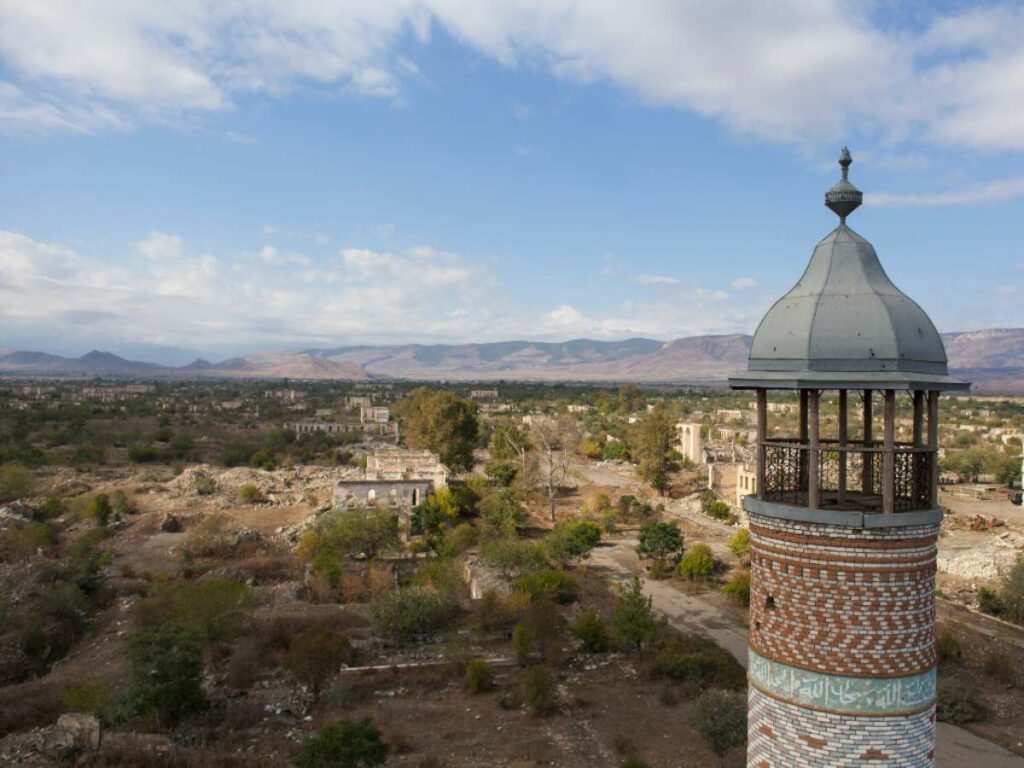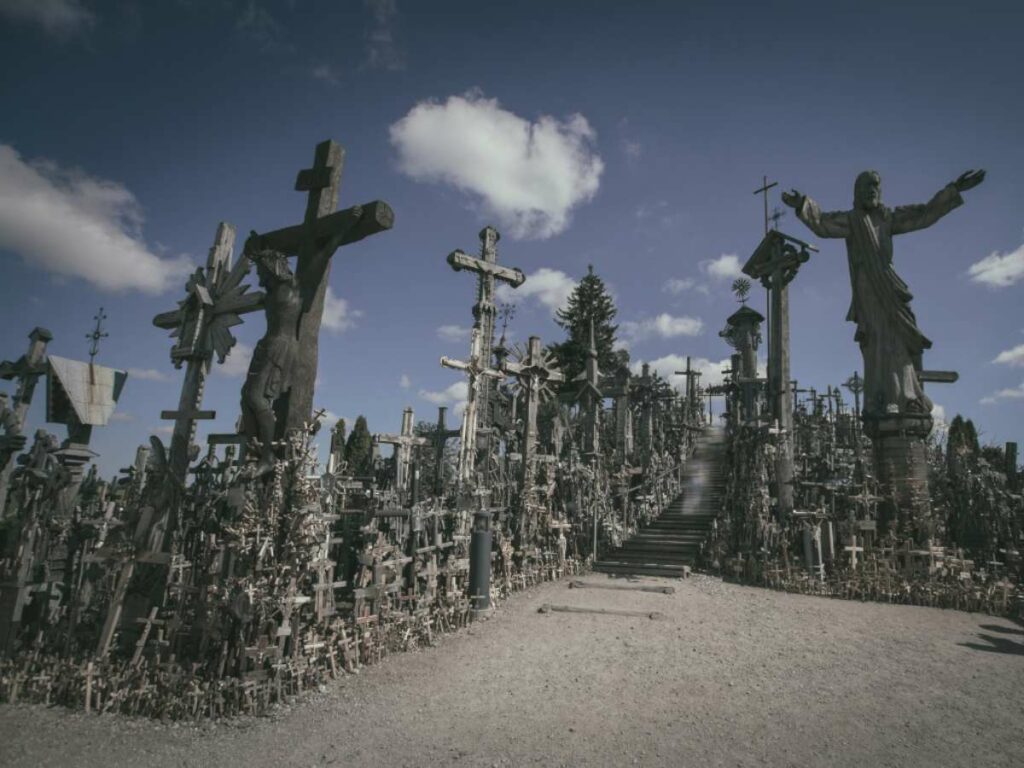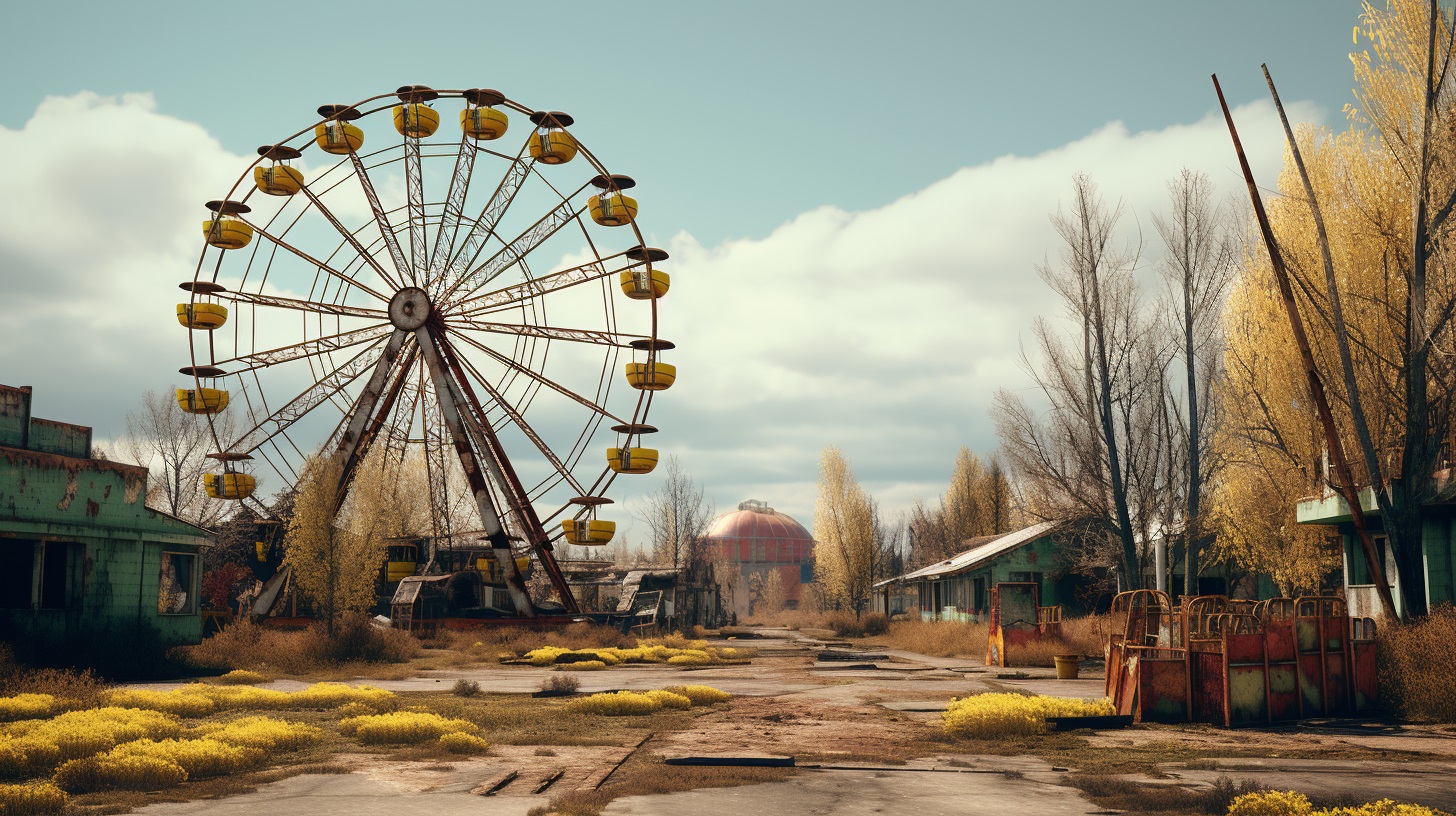Where to go in Europe to see the most darkness
Dark tourism, also known as thana tourism or sad tourism, is gaining popularity as a unique and thought-provoking approach to engaging with history and human experiences. This kind of travel entails visiting locations and sites associated with death, tragedy, disaster, or significant historical events. While it may appear unusual, its appeal stems from its ability to connect tourists with the past and explore elements of mankind that are frequently uncomfortable, sad, or emotionally charged.
The popularity of dark tourism has skyrocketed in recent years. More and more tourists are looking for opportunities to visit places such as former concentration camps, battlefields, catastrophe sites, and sites of loss and sorrow. Some are drawn to pay their respects to victims and remember their experiences. Others are drawn to the opportunity to develop an improved understanding of historical events that shaped societies and cultures. In this article, you can find the darkest places to visit in Europe.
Pompeii, Italy
The devastating eruption of Mount Vesuvius in 79 AD abruptly brought to an end the bustling Roman city of Pompeii in Italy’s Bay of Naples. The eruption, one of history’s most renowned volcanic occurrences, buried the city beneath layers of ash, pumice, and debris. The eruption occurred quickly, releasing a large plume of ash and gas into the sky and catching the residents of Pompeii off guard. An estimated 2,000 people died as a result of this. For years, the city remained lost and forgotten until its rediscovery in the 18th century.

Pompeii is now a heartbreaking archaeological site, providing a rare and frightening view into everyday life in ancient Rome. The preserved ruins of buildings, streets, and even casts of victims trapped in the eruption demonstrate the volcanic disaster’s rapid and catastrophic impact. The remains serve as an important symbol of the unpredictability of natural disasters and the fragility of human existence, leaving tourists from all over the world with a lasting impression.

Chernobyl Exclusion Zone, Ukraine
The Chernobyl Exclusion Zone in northern Ukraine became the location of one of the greatest nuclear disasters in history in April 1986. The catastrophic explosion at Chernobyl Nuclear Power Plant Reactor No. 4 blasted a massive amount of radioactive material into the air. Following the explosion, a sizable fire that burned for days spread radioactive particles throughout the area and even into other parts of Europe. The immediate aftermath resulted in the evacuation of local villages and the establishment of the Chernobyl Exclusion Zone, a wide area surrounding the facility considered unfit for human settlement due to excessive radiation levels. The tragedy had serious health and environmental implications, resulting in a number of sudden deaths as well as a long-term increase in cancer rates and other health problems in the impacted community.

The Chernobyl Exclusion Zone, often known as the “Zone of Alienation,” is a disturbing and unsettling reminder of the accident. The zone’s abandoned settlements, dilapidated buildings, and overgrown landscapes are trapped in time. The site also features the Chernobyl Power Plant’s ruins, notably the iconic sarcophagus that was built to encapsulate the damaged reactor.
Now, the Chernobyl Exclusion Zone attracts tourists and experts interested in studying the disaster’s impact and the nuclear decommissioning process. While the zone is a witness to human error and the tragic consequences of a nuclear disaster, it also serves as an important reminder of the need for safety precautions and the potential dangers of nuclear energy.
*Unfortunately, due to the current situation in Ukraine, we cannot recommend travel there. You can use this information and inspiration to plan a trip to Ukraine when it is once again safe to travel there.

Auschwitz-Birkenau Memorial and Museum, Poland
The Auschwitz-Birkenau Memorial and Museum in Owicim, Poland, stands as a sobering reminder of the Holocaust’s horrors during World War II. It was the greatest Nazi concentration and execution complex, consisting of the camps Auschwitz I and Auschwitz II-Birkenau. The Nazis established the facility in the early 1940s and saw the systematic persecution, slavery, and mass murder of around 1.1 million individuals, primarily Jews but also Romani people, Poles, Soviet prisoners of war, and others.

Auschwitz I was established largely for administrative purposes and medical experiments, but Auschwitz II-Birkenau was designed primarily for mass extermination. Through means such as gas chambers and mass shootings, innocent people were subjected to unthinkable misery, forced labor, torture, and death.
Today, the site serves as a memorial and museum, with the goal of honoring the victims’ memories, educating tourists about the Holocaust, and encouraging tolerance and understanding. The surviving barracks, gas chambers, and other facilities give a frightening and melancholy experience that portrays the magnitude of the horrors committed. The artifacts, images, and personal possessions of victims in the museum serve as a strong reminder of the tragedies and the significance of preventing similar horrors in the future.
Visit the official website of the Auschwitz-Birkenau Memorial and Museum for additional information.

Sedlec Ossuary, Czech Republic
The Sedlec Ossuary in Kutná Hora, Czech Republic, is a one-of-a-kind and gruesome site of devotion and introspection. It is known as the “Bone Church” because of its elaborate ornamentation made of human bones. The ossuary is located beneath the Cemetery Church of All Saints and was built in the 16th century to accommodate the exhumation of old burials due to the cemetery’s restricted area.

The interior of the ossuary is decorated with a variety of bone arrangements, such as chandeliers, coats of arms, and even a chalice made of bones. The huge chandelier, which contains at least one of every bone in the human body, is the most noticeable feature. The artistic and sombre arrangement of bones serves as a visual meditation on mortality and the fleeting nature of existence.
Due to its distinctive ornamentation and the deeper ideas it depicts, Sedlec Ossuary is now a popular tourist destination. The site offers a contemplative experience, provoking thought about human existence and the interconnectedness of life and death.

Catacombs of Paris, France
The Catacombs of Paris are an elaborate underground network of tunnels and chambers beneath Paris, France’s bustling streets. Originally quarry tunnels used for limestone mining, they gained new significance in the late 18th century when they were converted into an ossuary. The catacombs housed the bones of millions of Parisians who were relocated from numerous graves throughout the city to address overpopulation and sanitary concerns.

The aesthetic arrangement and organization of bones produced a depressing and frightening atmosphere. The walls of the catacombs are lined with neatly arranged skulls and bones, many of which form captivating patterns. The location provided a sobering reminder of mortality and contemplation on the passage of time.
The extraordinary fusion of history and artistry makes the Catacombs of Paris today’s one-of-a-kind historical and cultural attraction that draws tourists. The underground labyrinth provides an insight into the city’s history as well as a thought-provoking experience that encourages reflection on life, death, and the shared human experience.
Visit the official website of The Paris Catacombs for additional information.

Lancaster Castle, England
Lancaster Castle, in the English city of Lancaster, is an ancient and majestic fortification with a rich history. It was built in the 11th century and has performed a variety of functions throughout its history, from defensive fortress to symbol of power and authority.
The castle’s most significant function has been that of a court of law. For centuries, it operated as a court and prison, witnessing trials, convictions, and sometimes executions. Within its walls took place the famous Pendle Witch Trials of 1612, in which people were accused of witchcraft and endured legal processes.

The castle’s role altered over time, and it eventually ceased to be a working prison in 2011. It is now open to the public and provides guided tours of its history and architectural aspects. The well-preserved courts, the dungeons, and the stunning views of the surrounding areas from the castle’s towers are all open to visitors.
Lancaster Castle serves as a visible link to England’s legal and historical past, providing insights into different eras’ legal systems and social dynamics. Its strong architecture and extensive history make it a popular site for history buffs and anyone interested in the growth of justice and governance.
Visit the official website of Lancaster Castle for additional information.

The Poison Garden, Alnwick, England
The Poison Garden, which is housed within the Alnwick Garden in Northumberland, England, is a one-of-a-kind and intriguing attraction that displays a collection of some of the world’s most dangerous and lethal plants. The garden, which was created with both educational and entertaining goals in mind, is intended to educate tourists about the hazards of poisonous plants while also showcasing their historical and cultural relevance.
Visitors to The Poison Garden can encounter a variety of lethal plants, such as belladonna, hemlock, and deadly nightshade, all of which have been used for a variety of purposes throughout history, from medicine to assassination. The garden is carefully managed and maintained, with safeguards in place to protect visitors from dangerous plants.

Guided tours explain the history, folklore, and science of these deadly plants. The garden’s goal is to educate visitors about the possible dangers posed by these plants while also encouraging an appreciation for their importance in human history and culture.
The Poison Garden provides visitors with a thought-provoking experience that mixes botanical curiosity with a cautionary narrative, allowing them to explore the darker side of the plant world while admiring the natural beauty of these often lethal species.
Visit the official website of The Alnwick Garden for additional information.
Oradour-sur-Glane, France
Oradour-sur-Glane is a small village in the Limousin area of France that serves as a sad reminder of World War II horrors. As part of a Nazi retaliation for supposed resistance activity, the entire community was ruthlessly attacked in June 1944, and nearly all of its residents were slaughtered.

The community was left in ruins, with its original structures preserved as a memorial and historical site. Oradour-sur-Glane stands as a melancholy memorial to the atrocities of war, paying witness to the brutally cut short human lives.
Today, the village’s restored ruins provide tourists with a disturbing experience, with structures frozen in time and carrying the scars of destruction and loss. The memorial site contains a visitor center and museum that give context and information about what happened, honoring the victims’ memories and ensuring that their stories are never forgotten.
Oradour-sur-Glane is a mournful cry for peace, understanding, and remembering, as well as a somber prayer for the catastrophic consequences of conflict.

Corvin Castle, Romania
Corvin Castle, also known as Hunyadi Castle or Corvinesti Castle, is a historic defense in the Romanian town of Hunedoara. The castle, which was built in the 15th century, is known for its stunning Gothic architecture and rich history, which is linked with tales of knights, wars, and legends.

John Hunyadi, a notable Hungarian king, built the fortress during his rule, and his son Matthias Corvinus later expanded it. Corvin Castle operated as both a defensive castle and a dwelling for the aristocracy with its tall walls, drawbridges, and intimidating towers.
The castle’s interior features elegant halls, courtyards, and decorative decorations, which complement the Gothic architecture. The castle’s appearance has given it the nickname “Dracula’s Castle,” despite the fact that it is not directly related to the historical person Vlad the Impaler.
Today, Corvin Castle is a renowned tourist destination, allowing tourists to delve into a medieval world rich in history and myth. The dramatic setting and architectural beauty of the castle make it a fascinating destination for history lovers and those drawn to the charm of medieval legends.
Visit the official website of Corvin Castle for additional information.

Potočari Memorial Site, Bosnia and Herzegovina
The Potočari Memorial Site, located near Srebrenica in Bosnia and Herzegovina, serves as a sorrowful reminder of the Srebrenica Genocide, which occurred in July 1995 during the Bosnian War. The memorial is located in the former United Nations Dutchbat base, which was intended to be a safe refuge for fleeing Bosniak citizens.

Tragically, Bosnian Serb forces overtook the base, leading to the slaughter of over 8,000 Bosniak men and boys in the days that followed. The memorial site comprises a cemetery for genocide victims as well as a museum and exhibition space that archives the massacres, recounts survivors’ experiences, and provides historical context.
Every year on July 11th, the genocide anniversary, thousands of people gather at the Potoari Memorial Site to pay their respects and remember the victims. The site serves as a strong reminder of the tragedies of war and ethnic conflict, underscoring the significance of remembering and acknowledging past crimes in order to prevent them from happening again.
The Potoari Memorial Site is a site of meditation, education, and recollection, where visitors can remember the memory of those who died and learn about the impact of the Bosnian War on the region.

Agdam War and Ghost Town, Azerbaijan
Agdam, in Azerbaijan, was a town left in ruins after the Nagorno-Karabakh War, a late-twentieth-century battle between Azerbaijan and Armenia. Agdam was severely impacted due to its location within the combat zone. The devastation and abandonment of the town were caused by military operations and the resulting migration of its population.

During the battle, Armenian forces took control of Agdam and its surrounding areas. However, following a cease-fire agreement, Agdam was returned to Azerbaijan in the mid-1990s. The town had been destroyed by that point, with houses reduced to ruins and infrastructure in shambles.
Agdam’s devastated town is now a “ghost town,” devoid of its former population and life. The ruins of homes, schools, and businesses serve as a sobering reminder of how conflict affects civilian populations. The abandoned buildings and streets bear witness to the devastating repercussions of war and population displacement.
Agdam is now a potent emblem of conflict’s aftermath, reflecting the human and physical toll of war. It also highlights the significance of peaceful outcomes and efforts to restore and heal the wounds of previous conflicts.

Majdanek concentration camp, Poland
During World War II, Majdanek, near Lublin in Poland, was one of the major Nazi concentration camps. It was established in 1941 and functioned as a location for detention, forced labor, and mass slaughter of primarily Jewish captives, as well as other targeted populations. The camp’s proximity to a big metropolis set it apart from others, as it was not hidden in distant places like many others.

Majdanek’s victims were subjected to atrocities including forced labor, hunger, and medical experiments. The camp also included gas chambers and crematoria where thousands of prisoners were slaughtered, making it a concentration and extermination camp.
Majdanek, liberated by Soviet forces in 1944, is one of the best-preserved Nazi camps, offering a sobering reminder of the Holocaust’s horrors. The camp now functions as a memorial and museum, featuring restored barracks, gas chambers, and other facilities that provide insight into the lives and suffering of the camp’s victims. The Mausoleum, which was built in 1969, holds the ashes and bones of people who were burned and put into a mound after the camp was freed in 1944.
Majdanek is an important reminder of the Holocaust’s horrors, honoring the victims’ memories while serving as a somber monument to the value of remembering and learning from history.
Visit the official website of the Majdanek Museum for additional information.

Poveglia Island, Italy
Poveglia Island, located in Italy’s Venetian Lagoon, has a dark and mysterious history. Over the years, the island has served a number of purposes, including a quarantine station for plague victims and a mental health hospital. Its haunting reputation is based on stories of pain, death, and supposed paranormal activity.

During bubonic plague outbreaks, Poveglia Island served as a quarantine zone, where people infected were confined and left to die. In recent history, the island had a mental institute where inmates were allegedly mistreated and experimented on.
Poveglia Island’s abandoned structures and overgrown surroundings contribute to its creepy mood. Those who are interested in the island’s dark history and paranormal traditions have become curious about its reputation as one of Italy’s most haunted places.
Though the island is normally off-limits to visitors due to its state of deterioration and potential risks, its dark past continues to captivate those drawn to stories of mystery and tragedy. Poveglia Island is a reminder of how history can turn a place into a terrifying riddle.

Hill of Crosses, Lithuania
The Hill of Crosses in Šiauliai, Lithuania, is a one-of-a-kind and strong pilgrimage site with significant religious and historical importance. Visitors have been placing crosses, crucifixes, and religious icons on the hill for centuries as a gesture of faith, hope, and remembering.

The actual origin of the practice is unknown, but it is thought to have begun in the nineteenth century as a form of protest against Russian control and, later, Soviet occupation. Despite numerous administrations’ efforts to remove the crosses, the tradition remained, and the hill became a symbol of persistence and defiance.
Today, the Hill of Crosses stands as a tribute to the Lithuanian people’s continuing fortitude and commitment to their religious and cultural identities. Thousands of crosses of all sizes cover the hill, producing a spectacular and moving visual spectacle. It draws visitors from all around the world who come to think, pray, and leave their own religious symbols.
The Hill of Crosses is an important religious site as well as a symbol of national solidarity and resistance. Its calm and meditative ambiance makes it a compelling and moving pilgrimage destination for people looking for a one-of-a-kind pilgrimage experience.

House of Terror, Hungary
The House of Terror is a museum in Budapest, Hungary, that dives into the country’s turbulent history during the twentieth century. The museum, housed in a building that once housed both the Nazi Gestapo and the Soviet secret police, interprets the tragedies and atrocities committed by both regimes.

The House of Terror provides a comprehensive investigation of Hungary’s totalitarian regimes through immersive exhibits, artifacts, and multimedia presentations. Visitors can learn about citizen surveillance, oppression, and persecution under Nazi and Soviet control.
The museum serves as both a historical record and a memorial to the victims of these tyrannical governments. It underlines the significance of remembering the past in order to prevent such occurrences from happening again. The House of Terror is a strong reminder of the Hungarian people’s resilience and dedication to preserving historical memory.
The House of Terror is a chilling yet enlightening experience that stimulates meditation on Hungary’s specifics and the universal lessons that may be learned from its past.
Visit the official website of the House of Terror Museum for additional information.

BunkArt, Albania
BunkArt in Tirana, Albania, is a one-of-a-kind and interactive tour through the country’s Cold War history. The museum, housed under a massive underground bunker, provides insight into Enver Hoxha’s isolationist dictatorship.

The bunker, which was originally built as a fallout shelter for political and military elites, today houses exhibitions and multimedia displays that emphasize the harsh regime’s impact on Albanian society. Visitors can tour rooms that once housed communication equipment and learn about the period’s hidden procedures.
BunkArt is a strong reminder of Albania’s complex past, shining a light on the huge network of Cold War bunkers. It provides an opportunity to comprehend the regime’s isolationist policies, propaganda, and monitoring procedures.
The evocative location and educational exhibits of the museum create a thought-provoking experience, allowing visitors to reflect on the historical events that created Albania and the region as a whole. BunkArt is a living history lesson as well as a tribute to the resiliency of a nation emerging from a turbulent age.

Mostar, Bosnia and Herzegovina
Mostar, Bosnia and Herzegovina, is known for its rich cultural legacy and spectacular bridge that spans the Neretva River. The city’s name, “Mostar,” translates as “bridge keeper,” emphasizing the importance of the Stari Most (Old Bridge), a UNESCO World Heritage monument that has become a symbol of solidarity and endurance.

The history of the city displays the city’s numerous cultural influences, which include Ottoman, Austro-Hungarian, and Yugoslav aspects. The Ottoman heritage is on display in Mostar’s Old Bazaar, or Bazar Kujundiluk, with cobblestone alleyways lined with shops, cafés, and traditional crafts.
Mostar’s recent history, on the other hand, is defined by the devastation of the Bosnian War in the 1990s. Evidence of war is still evident and difficult to ignore, and the old front has been kept as a horrible reminder of what happened here in the early 1990s. The city was severely damaged, with the Stari Most being destroyed. Following the war, much effort was undertaken to reconstruct and restore Mostar’s cultural and historical sites.
Mostar is not only a beautiful destination, but it is also a place of contemplation, reminding us of community strength in the face of hardship and the necessity of maintaining a cultural legacy for future generations.





